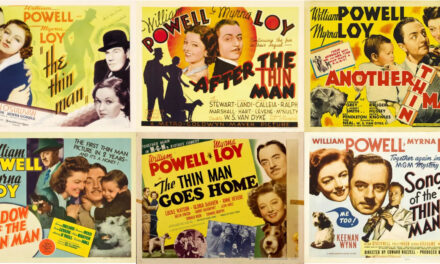
1945 Best Actress Oscar Nominees
The 17th Academy Awards, held in March 1945, acknowledged exceptional films from 1944 and celebrated outstanding acting performances. Five renowned actresses were nominated for the award for Best Actress in a Leading Role. In the course of their careers, these five 1945 Best Actress Oscar nominees would receive a total of 32 nominations and earn seven wins.
Here’s a look back at the nominees and the entertaining and inspirational movies for which they were nominated. In classic Academy Award style, the envelope will be presented and the winner will be announced after all the nominees and their films have been profiled. So read on!
Ingrid Bergman as Paula Alquist in 'Gaslight'
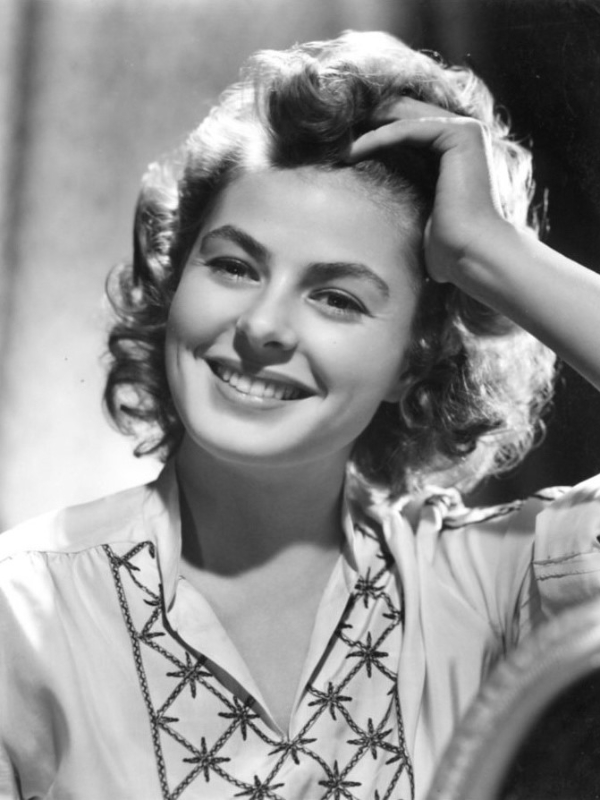
Ingrid Bergman in a press release publicity photo for Gaslight I1944). (MGM photographer, Public domain, via Wikimedia Commons)
Who Was Ingrid Bergman?
Ingrid Bergman (1915–1982) was a Swedish actress who had her first film role in a small, uncredited part in 1932. By the time she was 25, she had appeared in eleven films, with her first starring role coming in Intermezzo (1936). After Swedish movie fans voted her the most admired movie star of 1937, she received top billing in her next film, Dollar (1938).
Bergman’s performance in Intermezzo caught the eye of Hollywood producer David O. Selznick, who invited her to star in an English-language remake, even though she spoke virtually no English at the time. The 1939 movie was a hit, and Bergman was a star. She made ten Hollywood films in the 1940s, earning four Oscar nominations in that decade. She would ultimately accrue seven nominations and three wins.
For most movie fans, Bergman’s most enduring performance is probably her portrayal of Ilsa Lund in the classic wartime drama Casablanca (1942) opposite Humphrey Bogart. Her Academy Award nomination for Gaslight marked the second of three nominations in consecutive years, beginning with For Whom the Bell Tolls (1943) and continuing to The Bells of St. Mary’s (1945). Among her numerous other noteworthy performances are her starring roles in three Alfred Hitchcock films, Spellbound, Notorious (1946), and Under Capricorn (1949).
Bergman spoke five languages and acted in all five in the course of her career. In addition to her three Oscars, she won a BAFTA Award, four Golden Globe Awards, and numerous critics’ awards. Her international honors included five Bambi Awards from Germany, a César Award from France, and three David di Donatello Awards from Italy. She also won a Tony Award and two Primetime Emmy Awards.
Bergman’s film career spanned five decades. She is widely considered to be one of the greatest actresses of the 20th century, as well as one of the most beautiful.
What Is 'Gaslight' About?
Gaslight is a psychological thriller directed by George Cukor and starring Ingrid Bergman and Charles Boyer. The movie is based on the 1938 play Gas Light by English playwright Patrick Hamilton. It is set in London in the 1880s.
Bergman plays Paula Alquist, a shy young woman who aspires to be a singer like her late aunt, the famous opera singer Alice Alquist. After Alice is murdered in her London townhouse, Paula is sent to Italy for musical training. There she falls in love with her accompanist, Gregory Anton (Boyer), and they marry after a whirlwind courtship. At Gregory’s suggestion, they go to London to live in Alice’s townhouse, which Paula had inherited.
Soon after the newlyweds move into the house, Gregory begins to isolate Paula from the outside world and inflict subtle psychological abuse. When she is alone in the evening, the gaslights dim for no apparent reason. Gregory accuses her of absentmindedness, forgetfulness, and kleptomania when in reality he is cruelly manipulating her environment.
Gregory masks his manipulation with false concern for Paula. Continuing to believe that he loves her, Paula starts to accept that she is losing her mind. Fortunately, Inspector Brian Cameron of Scotland Yard (Joseph Cotten), who admired Alice Alquist, begins investigating Gregory’s suspicious behavior.
Gaslight was nominated for seven Academy Awards, including Best Picture, and won two. It was also nominated for the Grand Prize at the Cannes Film Festival.
Claudette Colbert as Anne Hilton in 'Since You Went Away'
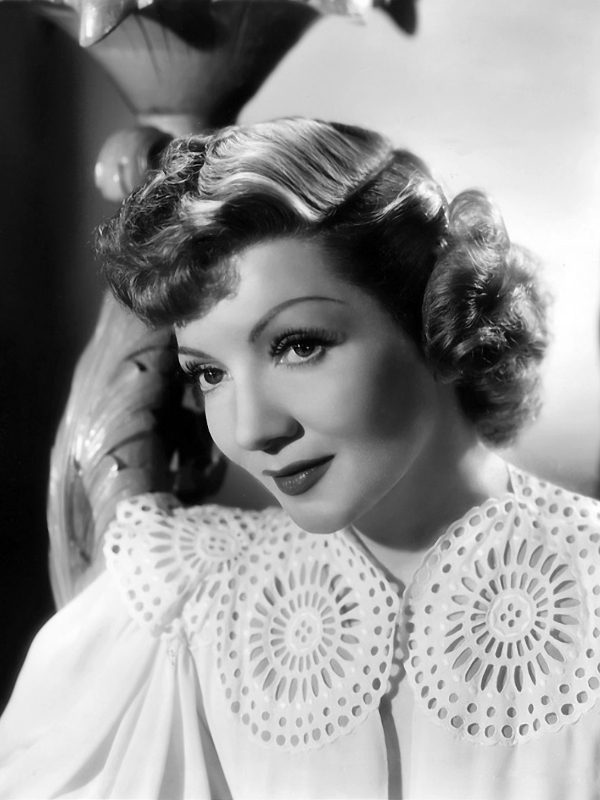
Claudette Colbert promotional photo. (Paramount Studio, Public domain, via Wikimedia Commons)
Who Was Claudette Colbert?
Claudette Colbert was a French-American actress, born in Saint-Mandé, just outside of Paris, in 1903. She emigrated to New York with her family as a child. She studied visual arts, but after she was offered a small part in a Broadway play in 1923, she turned her attention to acting.
Colbert earned good reviews for her performances on Broadway in the latter half of the 1920s. When the advent of sound films created opportunities for stage actors in Hollywood, Colbert signed a contract with Paramount Pictures. Her elegant looks and cultured voice appealed to the studio and soon to audiences as well.
In the 1930s and ‘40s, Colbert was one of Hollywood’s most popular and highest-paid actresses. Her Academy Award nomination for Since You Went Away was her third. She won the Oscar for Best Actress for her role as heiress Ellie Andrews in Frank Capra’s 1934 screwball comedy It Happened One Night—the first movie to win all of the “Big Five” Oscars (Best Picture, Best Actor, Best Actress, Best Director, and Best Writing). She also starred in two other 1934 movies nominated for Best Picture, Cleopatra and Imitation of Life (the only actress to date to star in three Best Picture nominees).
Colbert was known for her versatility as an actress. She was equally at home in romantic comedies, dramas, adventure films, and historical epics. As her film career wound down in the 1950s, she appeared frequently on television. She also returned to Broadway, most notably in the long-running romantic comedy The Merry-Go-Round, for which she received a Tony Award nomination.
Colbert last appeared onscreen in a supporting role in the television miniseries The Two Mrs. Grenvilles (1987). She won a Golden Globe Award and was nominated for a Primetime Emmy Award for her performance. In 1984, Colbert received the Film Society of Lincoln Center’s Chaplin Award for lifetime achievement, and she was a Kennedy Center honoree in 1989. She died at the age of 92 in 1996.
What Is 'Since You Went Away' About?
Since You Went Away is a film about the American home front during World War II. Producer and screenwriter David O. Selznick based the timely drama on a 1943 novel by Margaret Buell Wilder, Since You Went Away: Letters to a Soldier from His Wife.
In an epigraph, the American home is called the “unconquerable fortress.” The theme is unabashedly patriotic and pays tribute to the sacrifices of those in the armed forces. But its concern is with the families who are left at home trying to cope with their loved ones being away.
The movie begins in January 1943, as Anne Hilton (Claudette Colbert) returns home after her husband Tim has left for army duty. Anne doesn’t understand why Tim felt he had to volunteer, especially because they have two daughters at home, Jane (Jennifer Jones) and Bridget (Shirley Temple). But she is determined to make the best of the situation.
Anne’s first challenge is financial. To make ends meet, she reluctantly lets the family’s longtime maid Fidelia (Hattie McDaniel) go and takes in a boarder. She advertises a room for “an officer.” But rather than a young active-duty officer from the nearby military base, the retired, curmudgeonly Colonel William G. Smollett (Monty Wooley) rents the room.
Handsome young officers do appear, though. Navy Lieutenant Tony Willett (Joseph Cotten) soon arrives and invites himself to stay with the family while he is on leave. Tony is a family friend who has always been in love with Anne. Next to arrive is Corporal Bill Smollett, the Colonel’s estranged grandson. He and Jane begin seeing each other while he waits for his deployment orders.
The film brilliantly depicts the details of life on the home front, including food shortages and gas rationing, newsreels, dances for soldiers, eagerly awaited letters from the front, nurses caring for injured soldiers, and dreaded telegrams from the War Department. There are happy moments, including romance and even humor, but the wartime sadness and anxiety are never far from the surface.
Since You Went Away is a poignant drama that no doubt resonated with audiences who were experiencing many of the same challenges in their own lives that they saw onscreen. The movie was nominated for nine Academy Awards, including Best Picture, and picked up one win.
Bette Davis as Fanny Trellis Skeffington in 'Mr. Skeffington'

Bette Davis in a 1939 publicity photo. (Warner Bros., Public domain, via Wikimedia Commons)
Who Was Bette Davis?
Bette Davis (1908–1989) is widely regarded as one of the greatest actresses in Hollywood history. Her motion picture and television career began in 1931 and continued for six decades, and she received numerous accolades for her performances, including two Academy Awards for Best Actress in a Leading Role.
After a brief career on the Broadway stage, Davis moved to Hollywood. She made her movie debut in Universal Studios’ Bad Sister (1931). After appearing in more than 20 films in the early ‘30s, she achieved critical recognition with her portrayal of a disreputable woman in 1934’s Of Human Bondage. When the Academy Award nominations were announced and she was not among them, the Hollywood community organized a write-in campaign on her behalf—the only time the Academy allowed a write-in candidate to be considered for an Oscar.
Davis won her first Academy Award for Dangerous (1935) and her second for Jezebel (1938). The Jezebel nomination was followed by four more in consecutive years, for Dark Victory (1939), The Letter (1940), The Little Foxes (1941), and Now, Voyager (1943)—setting a record for consecutive nominations that was equaled only by Greer Garson several years later and has never been surpassed.
Davis earned four more Best Actress nominations in her career, including two nominations for films in which she played an aging actress. Her performance as venerable Broadway star Margo Channing in Best Picture winner All About Eve (1950) earned her not only an Oscar nomination but also Best Actress awards from the Cannes Film Festival and the New York Film Critics Circle. Her last nomination recognized her powerful, creepy performance as former child actress Jane Hudson opposite Joan Crawford in What Ever Happened to Baby Jane? (1962).
Davis was known for her distinctive voice, intense acting style, and willingness to take on challenging roles. She often played strong, independent, and complex women, including some unsympathetic or unattractive characters.
In 1977, Davis became the first woman to be honored with the AFI Life Achievement Award, and in 1999, she was ranked as the number two actress in the American Film Institute’s list of the “Greatest Screen Legends” in American film history. Her impact on the film industry and her contributions to the portrayal of women in cinema have left a lasting legacy.
What Is 'Mr. Skeffington' About?
Mr. Skeffington is a drama about a vain and spoiled socialite named Fanny Trellis (Bette Davis), her husband, Job Skeffington (Claude Rains), and her numerous other male admirers. The film, directed by Vincent Sherman, is an adaptation of English novelist Elizabeth von Arnim’s 1940 novel of the same name.
The story begins in 1914. Fanny and her brother Trippy live in a large house left to them by their deceased parents. Many young men are courting Fanny because of her beauty, and Fanny revels in their attention.
But trouble arises when Fanny learns from Trippy’s boss, Mr. Skeffington, that Trippy has been stealing from his brokerage firm. Mr. Skeffington offers to forgo prosecution if the money is repaid. He reminds Fanny that “the Trellis wealth was a legend,” but Fanny replies, “Now it’s a myth.”
Fanny realizes that Mr. Skeffington is in love with her and decides that marrying him is the best way to keep Trippy out of prison. However, Fanny is not in love with Mr. Skeffington. She continues to lead a self-centered and indulgent life. Her beauty is all that matters to her—when she gets pregnant, she is so worried that she will look “puffy” that she insists on moving to California to have the baby.
Despite Fanny’s indifference to him and then also to their daughter, Mr. Skeffington remains deeply in love with Fanny. Even when time and illness take their toll on Fanny, he continues to love her.
Mr. Skeffington explores themes of beauty, love, and sacrifice. It was popular at the box office, earning almost $4 million, and received critical acclaim. Both Davis and Rains earned Academy Award nominations for their performances, Davis for Best Actress in a Leading Role and Rains for Best Actor in a Supporting Role.
Greer Garson as Susie Parkington in 'Mrs. Parkington"
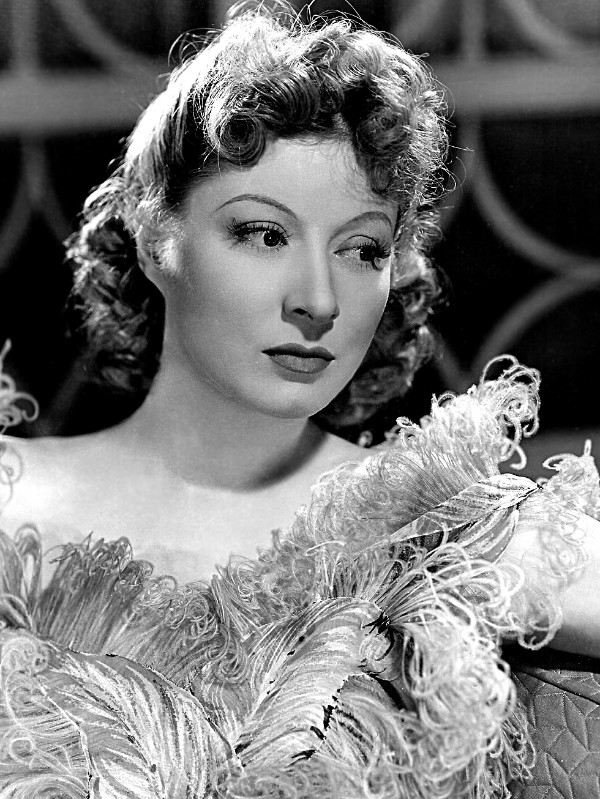
Greer Garson in a studio publicity photo, 1940s. (MGM studio, Public domain, via Wikimedia Commons)
Who Was Greer Garson?
Greer Garson was a British-American actress, born in 1904 in Manor Park, Essex, near London. She received a degree from Kings College London and also studied at the University of Grenoble in France. She then worked as a research librarian in the marketing department of Lever Brothers before turning to acting.
Garson was 27 when she made her stage debut in 1932. She continued to act on the stage in England for the next few years and also appeared in early BBC television productions. In 1937, while she was performing in the play Old Music at London’s St. James Theatre, Louis B. Mayer discovered her and signed her to an M-G-M film contract.
Once in Hollywood, Garson was cast only in leading roles, and she enjoyed quick success. She received a Best Actress Oscar nomination for her first film, Goodbye, Mr. Chips (1939). She then earned five consecutive nominations, for Blossoms in the Dust (1941), Mrs. Miniver (1942), Madame Curie (1943), Mrs. Parkington (1944), and The Valley of Decision (1945). In the first four of these movies, as well as in four later ones, Walter Pidgeon played her husband (or in one case, her eventual husband).
Garson’s five consecutive nominations tied the record set by Bette Davis, which has not been equaled since. She appeared in other notable films in the 1940s and early ‘50s, including Pride and Prejudice (1940) and Random Harvest (1942). She appeared primarily on television beginning in the mid-1950s, but in 1961 she received another Oscar nomination for her portrayal of Eleanor Roosevelt in the theatrical film Sunrise at Campobello.
Garson was one of the most popular and critically acclaimed stars of the 1940s. Her seven Academy Award nominations for Best Actress in a Leading Role are the fourth-most in that category in Academy history. She passed away in 1996 at age 91.
What Is 'Mrs. Parkington' About?
Mrs. Parkington is a romantic drama that follows the life of Susie Parkington (Greer Garson) over more than six decades, as she rises from humble beginnings to wealth and social position. The film, directed by Tay Garnett, is an adaptation of Louis Bromfield’s 1943 novel of the same name. It tells Susie’s life story through flashbacks framed by Susie reminiscing at a family gathering.
On Christmas Eve 1938, Susie, now a wealthy 84-year-old widow, is hosting her family in her New York mansion. Despite their wealth, most of the family members are bitter and dissatisfied. When Susie’s grandson-in-law Amory Stilham (Edward Arnold) admits he has serious money problems, Susie wants to help him, but none of her heirs is willing to risk their inheritance to pitch in. Meanwhile, Amory’s daughter Jane (Frances Rafferty) is going to elope to get away from the family.
The news prompts Susie to think about her own marriage. She met Major Augustus “Gus” Parkington (Walter Pidgeon) in a small Nevada mining town in 1872, when Susie was 18. Major Parkington owned the mine. Susie worked at her mother’s boarding house. After a mine explosion kills Susie’s mother, the Major promises to take Susie with him to New York and marry her.
In New York, Susie enjoys a life of wealth and privilege under the tutelage of Gus’s friend and former mistress, Baroness Aspasia Conti (Agnes Moorehead). Gus loves Susie, but their life together is not always smooth. Nonetheless, their marriage survives. Gus tells Susie there are two things she can rely on: “I’ll always be a scoundrel, and I’ll always love you.”
Susie’s reflections about her life with Gus influence her decisions about how to handle the family issues that have arisen in 1938: Amory’s money problems and Jane’s elopement. She trusts that Gus would approve.
Mrs. Parkington is an entertaining movie that also explores serious themes of love, wealth, social class, and privilege. It features excellent performances. Not only was Greer Garson nominated for the Academy Award for Best Actress, but Agnes Moorehead won both the Oscar and the Golden Globe Award for Best Supporting Actress. Walter Pidgeon and others in the case are also very good. The movie was well-received at the box office, taking in over $3 million in the U.S. and Canada.
Barbara Stanwyck as Phyllis Dietrichson in 'Double Indemnity'
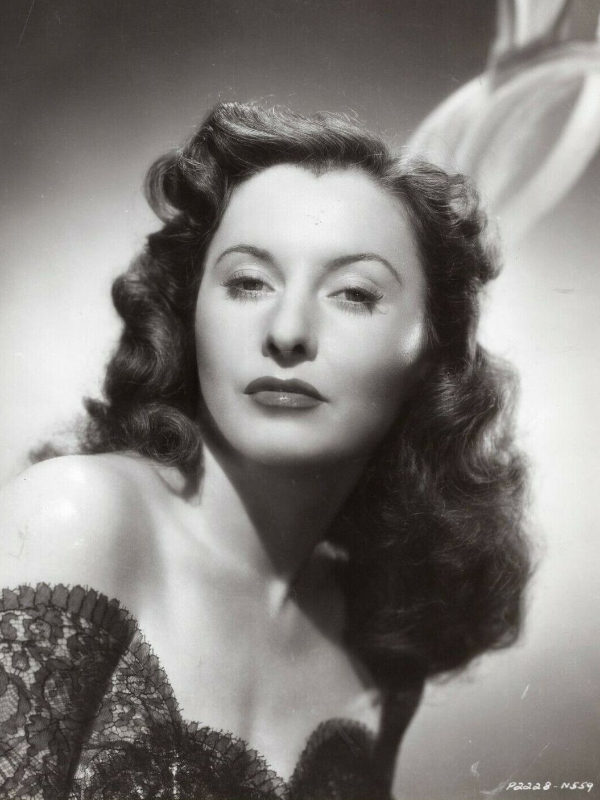
Barbara Stanwyck portrait by Whitey Schafer, October 1944. (Whitey Schafer, Public domain, via Wikimedia Commons)
Who Was Barbara Stanwyck?
Barbara Stanwyck (1907–1990) was an actress, model, and dancer. She made her stage debut under her birth name, Ruby Catherine Stevens, as a Ziegield girl in 1923 at age 16. She changed her name at the suggestion of theatrical producer David Belasco. By 1927, she was a Broadway star, playing the lead in the hit play Burlesque.
Stanwyck’s first film appearance came in a minor role in the 1927 silent film Broadway Nights. In 1928, she married actor Frank Fay and moved to Hollywood. She was soon appearing regularly in major roles, beginning with The Locked Room and Mexicali Rose, both released in 1929. She had a breakout role in Frank Capra’s Ladies of Leisure (1930). She would go on to make four additional movies with Capra, including the classic Meet John Doe (1941).
Stanwyck earned four Academy Award nominations for Best Actress in a Leading Role. Her 1945 Best Actress Oscar nomination for Double Indemnity was her third. She also received nominations for Stella Dallas (1937), Ball of Fire (1941), and Sorry, Wrong Number (1948).
In the 1950s, Stanwyck moved to television. She won her first Primetime Emmy Award for her 1960–61 anthology drama series, The Barbara Stanwyck Show. From 1965 to 1969, she starred in the very popular ABC western series The Big Valley, for which she won a second Primetime Emmy. She won a third in 1983 for her performance in the miniseries The Thorn Birds.
Stanwyck was recognized with numerous lifetime achievement awards. In 1982, she received an honorary Academy Award for “superlative creativity and unique contribution to the art of screen acting.” In 1986, the Hollywood Foreign Press Association honored her with the Cecil B. DeMille Award for “outstanding contributions to the world of entertainment.” Other life achievement awards came from the Screen Actors Guild (1967) and the American Film Institute (1987).
Stanwyck’s work over her six-decade career left a lasting legacy, and she is remembered as one of Hollywood’s iconic actresses.
What Is 'Double Indemnity' About?
Double Indemnity is a crime drama about a murderous insurance fraud scheme, starring Fred MacMurray, Barbara Stanwyck, and Edward G. Robinson. Billy Wilder directed the film and co-wrote the screenplay with Raymond Chandler. The screenplay is adapted from James M. Cain’s story of the same name, which was serialized in Liberty magazine in 1936 and then published as a novel in 1943.
MacMurray plays insurance salesman Walter Neff. Robinson is his colleague, claim adjuster Barton Keyes. The story opens with Neff in the insurance company offices late at night, in severe pain from a gunshot wound. He begins dictating a murder confession addressed to Keyes into a dictaphone. Neff’s dictation serves as a frame for the story, which is told in flashback with a first-person voiceover by Neff.
Neff first meets Phyllis Dietrichson (Stanwyck) when he goes to her home to obtain an automobile insurance policy renewal from her husband. The seductive Phyllis flirts with Walter and asks about getting an accident policy on her husband without his knowledge.
At first, Walter is upset by the implication of Phyllis’s inquiry, but he soon gives in to his attraction to her. He manages to get her husband to unwittingly sign an accident policy with a “double indemnity” clause that will double the payout for an unusual accidental death. Walter then conceives a plan to help Phyllis kill her husband in a way that will trigger the clause.
Walter and Phyllis carry out the plan, but it soon begins to unravel. Keyes suspects that Mr. Dietrichson’s death was not an accident. Meanwhile, Phyllis’s adult stepdaughter Lola (Jean Heather) confides in Walter that she suspects that Phyllis had murdered Lola’s mother a few years ago and has now murdered her father. Realizing that Phyllis has been using him, Walter confronts her and gunshots are exchanged.
Double Indemnity is a quintessential example of the film noir genre. Stylistically, it features sharp dialogue, an intricate plot, and dark visuals with sharp-edged shadows. Thematically, it explores dark themes of greed, lust, corruption, and betrayal.
In addition to Stanwyck’s Best Actress Oscar nomination, Double Indemnity received six other Academy Award nominations, including Best Picture, Best Director, and Best Screenplay. But it didn’t win any of them, losing those three to Going My Way. In 1992, the Library of Congress recognized the significance of the film by selecting it for preservation in the National Film Registry.
And the Oscar Goes to ...
The 17th Academy Awards ceremony was held on Thursday, March 15, 1945, at Grauman’s Chinese Theatre in Hollywood. Bob Hope hosted the ceremony, which was the first to be broadcast live on radio.
Any one of the five 1945 Best Actress Oscar nominees would have been a deserving recipient of the Academy Award. But the Academy awards only one Oscar for Best Actress in a Leading Role.
When actress Jennifer Jones announced the winner, the 1945 Best Actress Oscar went to Ingrid Bergman for her role as beleaguered newlywed Paula Alquist in Gaslight. Bergman’s performance also earned her the Golden Globe Award for Best Actress as well as an NBR Award for Best Acting from the National Board of Review.
Have you seen these five movies? Do you agree with the Academy’s choice?
Copyright © Brian Lokker 2023.


